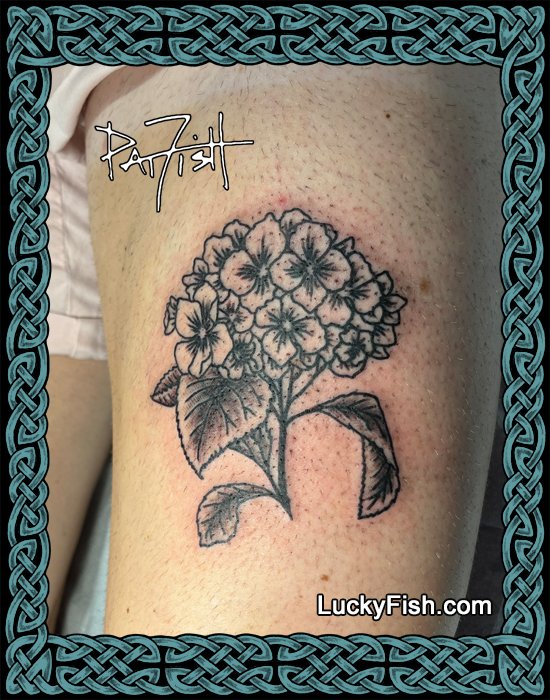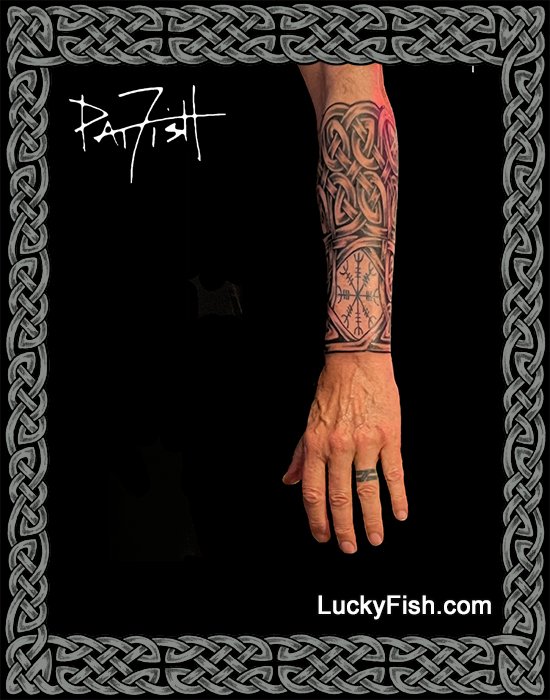In the world of body art, tattoos have evolved from being mere symbols of rebellion to becoming meaningful expressions of individuality and artistry. Among the myriad options available, the hydrangea flower tattoo has emerged as a popular choice, capturing the hearts of tattoo enthusiasts with its timeless elegance and rich symbolism. Let’s delve into the beauty and significance of the hydrangea flower tattoo, exploring its origins, meanings, and why it has become a cherished design among tattoo aficionados.
The Allure of the Hydrangea Flower Tattoo
The hydrangea flower, with its delicate petals and vibrant hues, holds a unique place in the world of botanical art. Its captivating appearance, which ranges from pale blues and purples to soft pinks and whites, provides tattoo artists with a versatile canvas to work on. The intricate layers of petals and the lush foliage make the hydrangea an ideal subject for intricate and detailed tattoo designs, appealing to those seeking a blend of sophistication and symbolism in their body art.
Read MoreTattoos have transcended their status as mere body art to become profound expressions of identity, beliefs, and emotions. Among the myriad tattoo designs, the sunflower tattoo stands out as a vibrant symbol of positivity, growth, and beauty. This article delves into the captivating world of sunflower tattoos, exploring their rich symbolism, cultural significance, and various design possibilities.
The Symbolism of Sunflowers and the Sunflower Tattoo
Sunflowers have long captivated human imagination with their remarkable beauty and unique growth patterns. As their name suggests, these flowers exhibit a tendency to face the sun, symbolizing warmth, light, and positivity. In the realm of tattoos, sunflowers are often chosen as representations of personal growth, happiness, and a bright outlook on life.
Read MoreTattoo enthusiasts are drawn to timeless designs that encapsulate ancient symbolism, and the Helm of Awe Tattoo undoubtedly falls into this category. This enigmatic emblem, rooted in Norse mythology and renowned for its protective qualities, has garnered a lot of attention. However, a central question emerges: should one incorporate the Helm of Awe tattoo within a Celtic knot sleeve, or is it more impactful as a standalone motif? To navigate this decision, a deeper understanding of the Helm of Awe tattoo's historical significance, its unexpected ties to Celtic culture, and the artistic factors influencing these choices is essential.
Significance of the Helm of Awe and Helm of Awe Tattoo
The Helm of Awe, also known as "Ægishjálmr" in Old Norse, finds its origins in Viking Age Iceland and Scandinavia. Its captivating design features eight arms radiating from a central point, resembling both a spiked circle and a compass rose. Beyond its visual appeal, the Helm of Awe holds a unique significance that has persisted through the ages. This symbol was more than a decorative choice—it embodied protection and strength, believed to render its wearer invincible in times of adversity.
Read More



